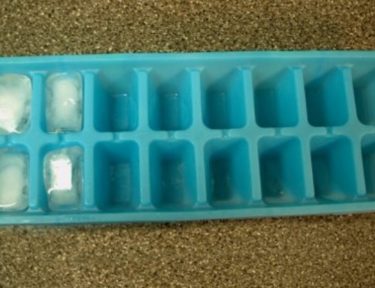What Happens When You Sprinkle Flour in a Clean, Stainless Steel Sink
Yes, even stainless steel needs a regular cleaning! But many commercial stainless steel cleaners seem harsh, and chock-full of chemicals with names we can’t pronounce. Luckily, there are some great natural cleaners to use as an alternative. One of them costs practically nothing, and is probably sitting in your cupboard right now: flour.
OK, OK, so flour isn’t something we normally think of as a “cleaner.” But it can work to get your stainless steel sink spotless. That’s because the little flour particles act as a mild abrasive, scrubbing away all the grime on the surface and in the nooks and crannies of your sink.
There is a process you’ll need to follow carefully, though. First, wipe the whole sink down with a regular old kitchen spray. Hot, soapy water works just fine, too. This step helps to get rid of some of the surface grime, so you can concentrate on polishing.
After that, wipe the sink completely dry with a clean towel. And we mean completely: after all, you’re about to put flour in your sink. Unless you want to end up with a sticky, doughy mess, you want to keep that flour away from any water!
Next, sprinkle some flour over the surface of your sink. No need to measure in this case! You’re just looking to make sure there’s enough to scrub the flat parts of your sink as well as any grooves where grime might lurk. Take a clean, dry towel, and start buffing all over the sink in a circular motion. That, combined with the flour scrub, will give your sink a nice shine.
By this point, the skeptics among you are saying in horror “Hold on a second. PLEASE tell me you’re not about to wash all that flour down the drain!” It’s true that rinsing flour down your sink can be a recipe for disaster, since it tends to clog drains.
Because of that, some would say not to try the flour method at all. You could use the same polishing technique with baking soda, which dissolves in water and won’t clog your drain, instead of flour. But say you need to polish up your sink in a hurry and don’t have any baking soda around–what do you do?
Go ahead and use the flour method as long as you’re careful to wipe out all of the excess once you’re done. You could use a towel to wipe the flour out of the sink and into the trash. Some users have found a rubber scraper is also really helpful to get it all out of the sink.
Or, you could follow the crafty suggestion from Southern Living magazine. After you’re done buffing the sink, just use a vacuum cleaner to suck all of the flour right out of the sink. A hose attachment or a hand-held model will work great. Nice and easy!
Stainless steel sinks can look great, but they also seem to be a magnet for grime. This buffing trick could be a nice way to quickly polish yours and add that little extra touch of shine to your kitchen. What do you think about the technique? Does it seem nifty, or are you skeptical? Do you have other tips for cleaning a stainless steel sink?
Source:
The Kitchn




